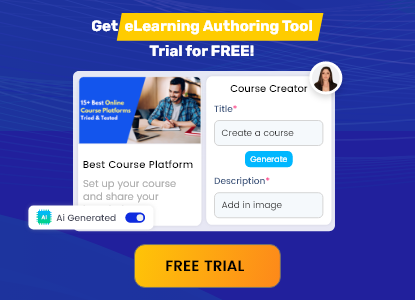In the ever-evolving world of eLearning, SCORM vs Tin Can is a hot topic. Both are standards that govern how learning management systems (LMS) and digital courses interact, but they have significant differences. Whether you’re an instructional designer, a corporate trainer, or an organization looking to implement an LMS, understanding these two standards is crucial.
SCORM (Sharable Content Object Reference Model) has long been the industry standard, while Tin Can, also known as xAPI (Experience API), is the next-generation alternative. But which one should you choose for your eLearning initiatives? In this blog, we’ll break down the key differences, benefits, and use cases to help you make an informed decision.
What is SCORM?
SCORM (Sharable Content Object Reference Model) is a set of technical standards that enables eLearning courses to be compatible with various LMS platforms. It ensures that content can be easily shared and reused across different systems.
Key Features of SCORM:
- Standardized communication between content and LMS
- Allows course tracking (completion status, scores, and time spent)
- Supports reusability across multiple LMS platforms
- Requires an internet connection to function
SCORM has been widely used for over two decades, making it a reliable and familiar standard for many organizations.
What is Tin Can (xAPI)?
Tin Can, also known as Experience API (xAPI), is a more flexible and advanced standard that addresses SCORM’s limitations. Unlike SCORM, Tin Can allows tracking of learning experiences beyond the LMS.
Key Features of Tin Can:
- Tracks learning across multiple devices and environments (mobile, offline, VR, real-world activities)
- Stores learning records in a Learning Record Store (LRS), independent of an LMS
- Captures informal and social learning experiences
- Provides detailed analytics and reporting
Tin Can is designed to support modern learning needs by offering greater flexibility and data capture capabilities.
SCORM vs Tin Can: What Are the Key Differences?
1. Tracking Capabilities
SCORM primarily tracks course completion, time spent, and scores. Tin Can, on the other hand, captures a wider range of learning experiences, including informal learning, mobile learning, and performance-based activities.
2. Offline Learning Support
SCORM requires an active internet connection, whereas Tin Can allows learning activities to be recorded offline and synchronized later.
3. Interoperability
SCORM relies on an LMS for data storage and reporting, making it LMS-dependent. Tin Can stores learning data in an LRS (Learning Record Store), which enables cross-platform learning analytics.
4. Flexibility and Future-Proofing
SCORM is limited to traditional eLearning modules, while Tin Can supports a broader range of learning experiences, including real-world and blended learning.
5. Ease of Implementation
SCORM is easier to implement due to its long-standing adoption, while Tin Can requires more technical setup but provides significantly enhanced tracking and insights.
Which One Should You Choose?
Choose SCORM If:
- You need a standardized LMS-compatible course format.
- Your focus is on basic tracking (completion, time, scores).
- Your organization does not require tracking of informal learning.
Choose Tin Can (xAPI) If:
- You want to track learning beyond an LMS, including mobile apps, simulations, and offline activities.
- You need detailed analytics and learning insights.
- Your organization prioritizes modern learning methods such as social learning, gamification, and interactive experiences.
Key Takeaways
- SCORM is a reliable, LMS-compatible standard for structured eLearning courses.
- Tin Can (xAPI) offers enhanced tracking, offline support, and more flexible learning analytics.
- SCORM is best for traditional eLearning, while Tin Can is ideal for modern, multi-platform learning experiences.
- Organizations should choose based on their learning goals, technical capabilities, and future growth plans.
Final Thoughts: Ready to Upgrade Your eLearning Strategy?
Choosing between SCORM vs Tin Can depends on your organization’s learning needs. If you’re looking for a simple and widely supported solution, SCORM is a great choice. However, if you want to future-proof your training with advanced tracking and analytics, Tin Can is the way to go.

About the author
Olivia Dodd
author
Olivia Dodd is an eLearning strategist at CogniSpark AI, bringing her expertise in operations, performance optimization, and inclusive learning solutions. With a strong background in business development and workforce transformation, she focuses on creating engaging and effective eLearning experiences for organizations worldwide. At CogniSpark AI, Olivia plays a key role in developing innovative learning strategies that align with corporate goals, ensuring seamless integration of technology and instructional design. Her passion for diversity, equity, and inclusion also drives her efforts to build learning solutions that are accessible and impactful for all learners. With years of experience in leadership roles, Olivia has successfully collaborated with global enterprises, enhancing their training programs through cutting-edge eLearning solutions.





















